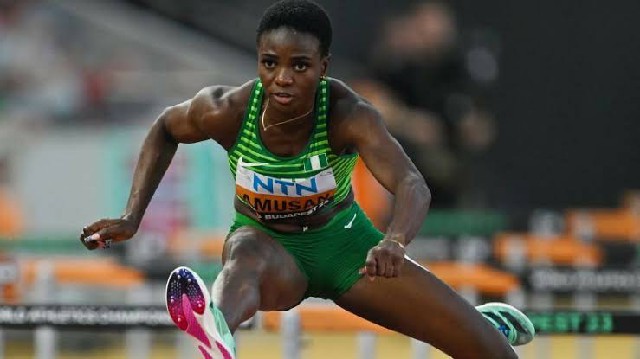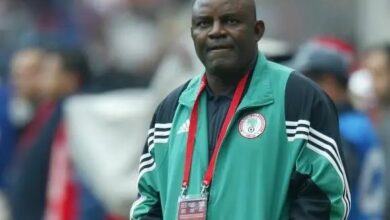Tobi Amusan Takes Tokyo Silver in 100m Hurdles

Tokyo/Lagos — Tobi Amusan is back on a global podium. The Nigerian star ran 12.29s to secure silver in the women’s 100m hurdles, delivering Team Nigeria’s first medal of the championships and signalling a full return to elite consistency.
Race Snapshot
In a loaded final, Ditaji Kambundji (SUI) won gold in a Swiss record 12.24s, with Amusan (NGR) 12.29s and Grace Stark (USA) 12.34s completing the podium. The depth was world-class: Masai Russell (USA) 12.44, Pia Skrzyszowska (POL) 12.49 SB, Devynne Charlton (BAH) 12.49 SB, Danielle Williams (JAM) 12.53, Nadine Visser (NED) 12.56.
Technical Take
- Clean middle phases: Amusan’s hallmark—efficient clearance from hurdles 4–7—was evident, keeping her in medal range despite a searing early pace from Kambundji.
- Strike rate & rhythm: Silver came from stable stride ratios and minimal braking on landings; her between-hurdle turnover looked closer to her peak 2022 cadence.
- Separation at the tape: Tokyo rewarded the best final two barriers; Kambundji’s late-race velocity held, while Amusan found enough lift on H9–H10 to protect silver under pressure from Stark.
Context: Amusan remains among the event’s historical benchmarks (world record holder at 12.12s in 2022). A 12.29s in a championship final is elite by any era’s standard.
Why This Silver Matters
- Brand & endorsements: A global medal re-prices Amusan’s market value—from kit deals and performance bonuses to regional consumer brands hungry for authentic African champions.
- Audience & media lift: Nigeria’s first medal shifts narrative and ratings at home; broadcasters and sponsors get a national hero storyline mid-tournament.
- Pathway economics: Medals drive grassroots participation; federations, state programs, and private academies can leverage the moment to funnel talent—and attract funding.
Nigeria’s Medal Math: Why Scarcity Persists—and How to Fix It
The issues
- Fragmented high-performance system: Sporadic camps, limited biomech & sport-science support.
- Inconsistent competition planning: Athletes peak for trials, then fade before globals.
- Facility & equipment gaps: World-class hurdles training needs fast tracks, video-timing, wind-legal reps.
- Funding volatility: Late disbursements disrupt taper, physio, and travel logistics.
- Coach development: Too little continuing education on rhythm training, injury prevention, and data use.
- Athlete welfare & governance: Contract clarity, prompt bonuses, and transparent selection build trust.
The fixes (6-point playbook)
- High-Performance Directorate: Centralise sport science (S&C, physio, nutrition, psych) and video/force-plate analytics.
- Calendar & tapering: Lock a Diamond League–centric race plan, with altitude and micro-tapers to peak at majors.
- Coach pathway: Fund Level III/IV clinics, global residencies, and analytics literacy for hurdle-specific coaches.
- PPP facilities: Partner private universities/clubs to maintain World Athletics-standard tracks with timing systems.
- Athlete contracts: SLA-style agreements on funding, flights, bonuses; penalties for late payments.
- Data & selection: Publish standards and ranking dashboards; select on metrics, not sentiment.
By the Numbers
- Amusan final: 12.29s (Silver)
- Gold: Ditaji Kambundji (SUI) 12.24s NR
- Bronze: Grace Stark (USA) 12.34s
- Nigeria at champs: First medal of the meet
What’s Next
- Circuit momentum: Expect Amusan to lean into the late-season circuit to convert championship form into ranking points and appearance value.
- Paris cycle learnings: The Tokyo runbook—targeted race schedule, cleaner mid-phase rhythm, and improved last-two barriers—now becomes the template for the next major final.
BRANDECONOMY Take
The Tobi Amusan Tokyo silver medal does more than decorate a résumé—it revalidates Nigeria’s capacity to mint world-class hurdlers. Sustain the science and the scheduling, and medals stop being episodic and become predictable outcomes. For sponsors, this is a low-risk, high-emotion asset: a proven champion with continental reach and global relevance.











